#cnn center
Text

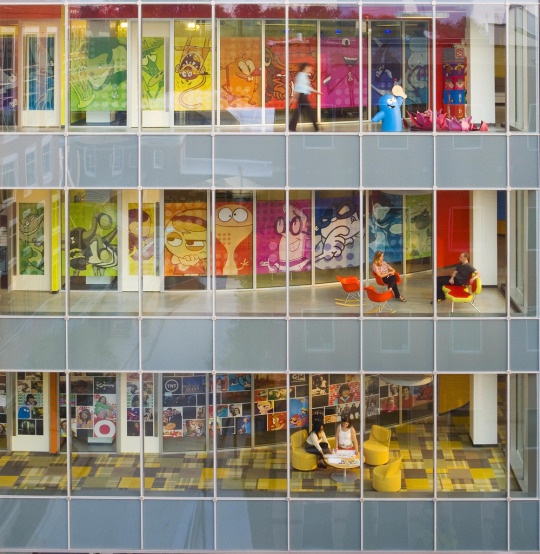


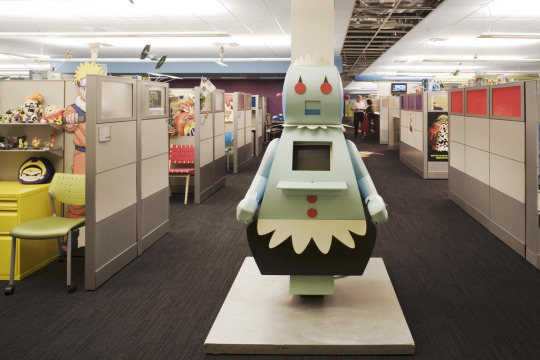





Cartoon Network at the CNN Center/The Turner Office in Atlanta Georgia (2006-07)
#cartoon network#cn#cnn center#cartoonnetwork#2000s#00s#2000s aesthetic#00s aesthetic#2000s core#00s core#foster's home for imaginary friends#ed edd n eddy#codename kids next door#the life and times of juniper lee#dexter’s laboratory#the powerpuff girls#hi hi puffy amiyumi#the grim adventures of billy & mandy#camp lazlo#my gym partner's a monkey#Ben 10#squirrel boy#camp of 3000
4K notes
·
View notes
Text

#cnn news#cnn tonight#cnn town hall#cnn center#cartoon network#Atlanta#adult swim#Turner#georgia#atl
6 notes
·
View notes
Text
https://www.tiktok.com/t/ZT8uMcXnV/
Oh I was living my best life while seeing Nicki. I had a blast and she put on a show. This was my first time seeing her and it for sure won't be the last. I have loved her since 2009 when I heard two classmates rapping itty bitty piggy. I have always loved female rap since I was young and there was no one popping off at that time then Nicki came to save female rap. It was such an emotional moment. ❤️
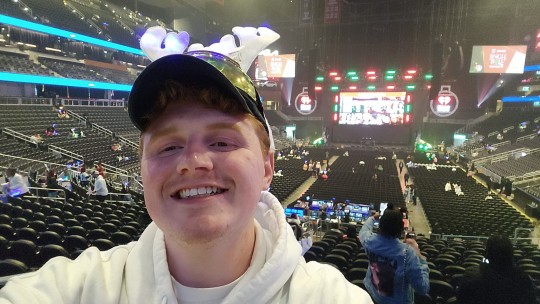

#ftcu#nicki#jingle ball#pink friday 2#roman in gag city#roman in malibu#nicki minaj#minaj#cnn center#state farm#state farm arena#atl#atlanta#georgia#barbie dangerous#are you gone already#beep beep#50 cent#fallin 4 u#fallin4u#let me calm down#Pink Birthday#needle#drake#cow girl#cowgirl#lourdiz#big difference#red ruby da sleeze#forward from trini
1 note
·
View note
Text
By Anthony Dimaggio
Allegations of media bias are ubiquitous among Republicans. When Donald Trump was asked in June about the federal prosecution against him for illegally retaining classified government documents, he attacked the "fake news" media for their "continuation of the witch hunt" against him "that's been going on for literally seven years."
Such attacks are hardly new for Trump, who in May reportedly became angry with questions from NBC News reporter Vaughn Hillyard about Manhattan District Attorney Alvin Bragg's criminal investigation, tried to grab Hillyard's phone and then told aides to "get him outta here."
The assault on press freedom is also nothing new for the Republican Party. Florida Gov. Ron DeSantis, now a presidential candidate, recently endorsed a legislative effort to curtail press freedom by designating anonymous news sources as "false" for legal purposes in defamation cases and eliminating the "journalist's privilege" protection, which shields reporters from having to identify anonymous sources in defamation lawsuits.
Not to be outdone, Trump weighed in on the question of how to punish journalists, suggesting that reporters who published the leaked Supreme Court decision overturning Roe v. Wade should be prosecuted, incarcerated and then raped in prison.
These developments are part of a larger right-wing assault on media freedom and the right of journalists to critically report the news. These attacks are driven by the assumption that the media has a liberal bias, and is responsible for routinely purveying "fake news" and systematically manipulating the public as a result.
The response from much of the public, including the GOP base, is what one would expect, with rising distrust of the news media. Recent polling finds a majority of Americans agree that "the news media fuels political division," with 61% of Republicans, 36% of independents and 23% of Democrats agreeing that the media are "hurting democracy." Half of Americans think that national news outlets "intend to mislead, misinform, or persuade the public to adopt a particular point of view through their reporting."
These narratives warning of media manipulation and pernicious liberal bias can create a separate reality for much of the public, independent of whether there is evidence of any such pervasive bias in media content and effects. As a scholar of political communication, I've spent the last 20 years studying the question of media bias in politics. My own scholarly work, looking at decades of reporting on various public policy issues, has uncovered little evidence historically of a pervasive liberal or pro-Democratic bias in the news.
As reporters themselves acknowledge, and as I find in my research, it is more accurate to speak of a pro-official bias in the news, in which reporters privilege whatever party is in power in Washington at a given time. None of this evidence necessarily matters, however, when the prevailing narrative in American political culture — particularly among Republican officials, right-wing pundits and much of the public — is that the media is purveying biased "fake news."
Independent of this heated and incendiary rhetoric, it's worth looking at the facts. For example, in my own research examining more than 160 polling questions between the mid-2000s and the mid-2010s, I found virtually no evidence of liberal media effects for consumption of various outlets such as CNN and MSNBC, which are commonly attacked for their purported bias.
Consumption of news MSNBC only had a significant association with liberal political attitudes on various questions 15% of the time, and this was true just 10% of the time for CNN. Rather, the primary culprit when it came to indoctrination effects was Fox News, with consumption of that channel's news significantly associated with holding right-wing beliefs 60% of the time, even after controlling for respondents' partisanship and ideology, among other factors.
These findings undermine claims about a pro-Democratic or liberal media bias in the years before Trump. But what about the period since he was first elected, which has generally been associated with more extreme partisan polarization? I updated my polling analysis to include the years of Trump's presidency — and the findings largely reinforce my previous research. Although there is certainly evidence of increasing polarization "on both sides," such polarization is still primarily a right-wing phenomenon, testifying to highly asymmetrical media effects that appear to favor GOP indoctrination efforts.
Examining polling from September 2019 and September 2020 from the University of Chicago's National Opinion Research Center (NORC) and the Pew Research Center, I looked at consumption of various media, in relation to public opinion on political questions during the Trump era. I utilized statistical analysis to track how often consumption of CNN, MSNBC and Fox News is associated with respondents forming liberal and conservative political attitudes, after accounting for various factors, including respondents' ideology, partisanship, age, education, race, gender and income.
First of all, there is definitely reason for concern about "both sides" when it comes to the rise of echo chambers in American media. Clearly, liberals and Democrats are gravitating toward certain news sources, and conservatives and Republicans toward others. In the NORC survey, Democrats were significantly more likely to say they consumed CNN and MSNBC regularly, while Republicans were more likely to say they relied heavily on Fox News. 29% of Democrats said they relied "a lot" on MSNBC for their news, compared to just 3% of Republicans. Similarly, 36% of Democrats relied a lot on CNN, compared to 6% of Republicans. Alternatively, 44% of Republicans relied a lot on Fox News, compared to just 7% of Democrats. None of these trends are encouraging in a country that considers itself a democracy — at least if democracy requires an informed citizenry willing to consider different sources of information and views contrary to those they already hold.
Beyond the echo-chamber question, there's the matter of whether consuming these venues has an indoctrination effect on viewers. Here, the evidence suggests that Americans should primarily be concerned about the power of right-wing outlets like Fox News. Looking at both the NORC and Pew polls, I analyzed media consumption in relation to a battery of political questions. For the Pew poll, I examined attitudes about how well Trump responded to the COVID-19 crisis; opinions about how truthful Trump was in relation to conveying information about COVID; attitudes about the pro-Trump extremist movement QAnon; and attitudes about alleged mass voter fraud in U.S. elections.
The NORC survey fielded other political questions, including opinions about the overturning of Roe v. Wade; about efforts to repeal the Affordable Care Act; about laws barring employment discrimination based on sexual orientation; about government financial support for religious schools; about support for Second Amendment gun ownership rights and a ban on semiautomatic rifles; about whether business owners should be able to refuse services to LGBTQ+ individuals for religious (or "free speech") reasons; about whether Trump should have ended DACA protections for unauthorized immigrants; about same-sex marriage; about affirmative action in college admissions; about Trump's travel ban against immigrants from Muslim-majority countries; about private companies denying birth control to employees based on religious objections; about corporations and unions spending unlimited money in U.S. elections; about federal court decisions on partisan gerrymandering disputes; about Trump's job approval rating during the COVID crisis; and about voting preferences between Trump and Joe Biden in the 2020 election. With such a large set of questions, whatever pattern is uncovered should tell us a lot about alleged partisan indoctrination in the media.
What we see here, in fact, is dramatic evidence of partisan indoctrination in the news — and it's primarily a right-wing phenomenon. In just four of the 20 survey questions was consumption of CNN associated with forming liberal political attitudes, after statistically taking into account viewers' partisan and ideological predispositions. The findings are stronger for MSNBC, with consumption associated with holding liberal attitudes for nine of the 20 questions. This is certainly evidence of indoctrination in favor of liberal values, significantly more than I found in the previous decade.
But far and away the strongest evidence of indoctrination is observed among consumers of conservative media. Consumption of Fox News was associated with holding conservative opinions an overwhelming 90% of the time — in 18 of the 20 questions surveyed. This is a far higher rate than during the decade preceding Trump, when Fox News viewership was correlated with forming conservative attitudes 60% of the time. These results tell us that partisan indoctrination has become overwhelmingly asymmetrical in the Trump era.
If we are concerned about ideological and partisan echo chambers, we should reorient the national discussion about media bias to focus first and foremost on the primary culprits: right-wing media outlets such as Fox News. The evidence explored here calls into question Republican claims that the "liberal media" is the leading indoctrination force in American politics and communication today. That role is reserved for the GOP's primary arm of mass communication, Fox News, which is crucial in mobilizing the party base to support conservative political causes.
But we shouldn't only be concerned about indoctrination. There's also the question of rising support for authoritarianism, and of public outrage being stoked against specific media outlets seen as overly critical of Trump. That rising anger is what fuels the Republican attack on press freedom, an assault that should be deeply concerning to anyone with a basic commitment to freedom of expression and constitutional democracy.
#us politics#news#salon#2023#republicans#conservatives#media bias#op eds#Anthony Dimaggio#cnn#msnbc#Fox News#University of Chicago's National Opinion Research Center#pew research center#National Opinion Research Center#right wing extremism#right wing terrorism#right wing cope#polling
55 notes
·
View notes
Text
how audacious it is to, from the comfort of your own home, declare that journalism is dead and real journalists don't exist anymore while turning a blind eye to the hundreds of palestinian and lebanese journalists killed by israel and the hundreds of SWANA journalists in various political prisons lol
7 notes
·
View notes
Text
#black lives matter#aclu#lgbt#lgbtqi#black lgbt#cnn#black stories#news#naacp#black history#southern poverty law center#democratic party#blacklivesmatter#liberal#politics#transgender#civil rights movement#civil resistance#american civil liberties union#civil rights#civil liberties#police attack#police brutality#police assault#police violence#police crime#police militarization#police murder#police misconduct#police killing
15 notes
·
View notes
Text
Why can't I wear a dress?' What schools can learn from preschools about supporting trans children
Story by Cris Townley • 1d


"A new group of young children has just started school for the first time, with many excited about new friends, uniforms and being at "big school."
But for trans kids, starting school can be a much more daunting process.

But school culture is much more cisnormative. This means schools tend to assume children can be sorted into boys and girls and everyone is comfortable in what category they are in.
You can see this in formal ways, with boys' and girls' uniforms and toilets and in informal ways, with boys and girls making different friendship groups and playing different games at lunch.
This makes it difficult for trans children to feel as though they belong at school. Trans students often have lower levels of well-being and lower educational outcomes than non-trans students.
My research looks at what schools can learn from preschools and other early learning settings such as daycare centers about how to support trans students.
My research
In 2023 I partnered with P-TYE, an advocacy network for parents of trans children. The study, which is currently in peer review, looked at how we can integrate support for trans children across a range of services including education, medical and mental health.
Through P-TYE and wider networks, we recruited 12 families with trans children. The children had an average age of 13 and had been recognized as trans between two and ten years.
Though interviews, I spoke to them about their experiences of childcare and school. Three themes emerged.
1. The importance of being 'child-centered'
Early education services are "child-centered." This means educators are trained to place a child's "belonging, becoming and being" at the center of their curriculum (as per the Early Years Learning Framework). This includes freely exploring gender and their identity.
One parent told us their trans girl "had an incredible teacher" for preschool "who'd take old curtains and make things […] these three-tiered skirts that were heavy and they made beautiful sounds and they caressed you when you wore them and [my child] found such joy in these creations.
In contrast, trans identity in schools often means "breaking the rules." Parents in the study described examples of schools not letting trans students express their identity. "Every day, she was asking, 'why can't I wear a dress to school'? Why do I have to go to the boys' toilets? They're mean to me when I'm in there."
2. Not categorizing kids by gender
Parents in the study also reported how children weren't categorized into genders by pre-school routines. As one interviewee said, "all the kids use the same toilet […] they [were called the] 'cockatoos' and the 'koalas' or whatever […] they weren't ever separated by gender."
But at school, children faced daily choices about whether they are a boy or a girl. One parent described how a class had segregated lunch crates for boys and girls. Their trans child stood out with "this pink drink bottle with unicorns on in a sea of dinosaurs."
Children also have to wear the correct uniform, be in the right line for sport and use the assigned toilet and can be bullied by other students when they try.
One child "survived kindergarten by walking." She told her parent
"I just realized that if I wasn't still, I was less of a target so I just made sure in kindergarten to keep moving and I never stopped moving."
For non-binary children—who don't feel like a boy or a girl—school brings a more complex set of difficulties.
One parent talked about a lucky dip at the school fete with boy or girl gifts. They said this signals to their child "I have to be one of these things or the other" and "tells my kid that they don't fit in the world."
3. Support for educators
Research shows having teachers who are positive about gender diversity is crucial for the well-being of trans students.
My interviews also suggested responses to trans kids often depend on individual educators and schools. Many preschool educators were supportive and "totally fine to change pronouns, like immediately." But as one parent told the study, one educator reportedly said, "I'm not going to play this name game" and refused to use a child's new name.
Some school teachers did make a difference. One well-being officer "put out all the uniforms and said, 'which one would you like to wear?'"
At a schools sports day one trans boy was allowed to compete with the boys. As his parent said, "He's never been a sporty kid. He came last and everything, but it made him really happy to to be in with the boys."
Another teacher was "fantastic" but "a bit old school" saying "I've got no idea what to do, what to call her, what to say. I'm really out to sea here."
This suggests both early education and school teachers need access to education and resources, so whether students get support isn't left up to chance.
What should schools do differently?
Schools should take the lead from early learning environments and stop "sorting" students based on gender.
This could mean:
having a range of uniform items children can select from as some schools already do
more all-gender toilet facilities, where privacy is protected for all students
preferred names and pronouns should be easy to change in school systems and teachers should use these.
Teachers also need access to resources and information so they can confidently have conversations about gender. This needs to be part of a whole-of-school approach to supporting trans students and their families..."
Provided by The Conversation This story was originally published on Phys.org.
"Phys.org is an online science, research and technology news aggregator offering briefs from press releases and reports from news agencies. Phys.org is one of the most updated science websites, with an average of 98 posts per day. It is part of the Science X network of websites, headquartered on the Isle of Man, United Kingdom."

Research Fellow, TEEACH, Western Sydney, Australia
Cris is a sociologist whose research explores what happens when we put the child, young person and family at the centre of the nexus between service delivery and education. This requires an intersectional approach, that recognises the multiplicity of identities lived by children, young people and families, and requires listening to their voices. Cris works collaboratively with partners to ensure that research supports change through informed policy and practice. Examples of Cris’ work are an exploration of Acknowledgement of Country practices in early childhood services, and design of online learning to support educators; co-design of a theory of change for multi-agency service integration reform; a partnership with ACON to investigate LGBTQ+ experience of service provision in Western Sydney; and initiation of a project to inform what supports young people to thrive in school, and finish school well.
Cris completed a PhD on identity, belonging and social support in Australian community playgroups at the Social Policy Research Centre at UNSW. Cris graduated from Cambridge University with a BA Hons and a Cert. Ed in Mathematics and Education, was a high school teacher, then undertook a Masters’ Degree in the Sociology of Gender Divisions from Essex University.
#MSN PUSHES DANGEROUS GENDER IDEOLOGY CULT#Cris Townley Article Phys.org Mislabels World Majority Population CIS#Israeli Loyal MSN MSNBC NBC CNN ABC Push Gender Ideology Cult For Billionaire Pritzker And WEF Nazi Klaus Schwab#Child Centered#Satanic#Self Centereed#Bacha Bazi#Groomed Gender Confusion#Misogynistic Transgender Movement#Ireland#It's bad in Australia and Britain
0 notes
Text
What Happened ... and What's Next at CNN?
Well, Chris Licht lasted just over a year as CNN’s chairman and CEO, and now he’s standing in the unemployment line … okay, probably not, since his net worth is an estimated $15 million, but you get the picture. What happened? I think that Robert Reich explains it as well as anyone … and for the record, I never liked Licht or his goals, and nothing I ever read about him made me change my mind,…

View On WordPress
#Chris Licht#CNN#David Zaslav#democracy vs fascism#Newt Gingrich#no political center#political divide#Robert Reich#Trump town hall#Warner Bros. Discovery
0 notes
Text
Media News: Chris Licht out at CNN after tumultuous run as CEO
Media News: Chris Licht out at CNN after tumultuous run as CEO #CNN #Chris Licht
CNN Chairman and CEO Chris Licht is stepping down from his position, according to an announcement by the news organization’s parent company.
Licht, who took over in February 2022 after Jeff Zucker’s resignation, faced challenges during his tenure, including a push to move the network towards the political center.
In a statement, Warner Bros. Discovery chief David Zaslav praised Licht’s work and…

View On WordPress
0 notes
Text
I mentioned this before but the one thing I cannot stand is selfishness which is where a lot of zionist talking points come from even when they *are* advocating for "peace" and "coexistence" because it centers ISRAELI safety and only thinks of Palestinian safety as secondary and indecental to Israeli (ie: the only way Israelis get safety is if their Palestinian """"neighbors"""" get safety which is such a selfish way to view the imprisonment and oppression of Palestinians) but then again they publish literal thinkpieces about the guilt Israeli soldiers feel when they eat food left behind by starving Palestinians — who, again, are starving BECAUSE OF ISRAELIS WHO ARE THE OPPRESSORS — so there's no way mainstream Israeli society will ever make changes to their language they they carefully curate to not include Palestinians (Haaretz is a beautiful example of this — take a look at their editorial staff list) because they all feed into their own sense of self pity and self righteousness rather than actually uplifting the voices of the oppressed. But then PALESTINIANS are the ones in this scenario who are accused of bias because they advocate and fight for their stories to be heard. Israelis do not have to find alternative means to put out their stories — has it occurred to you why Palestinians have had to use SOCIAL MEDIA to share their stories rather than traditional networks? It's because no one gives us the time of day. So we developed our platform through social media, even on here where @el-shab-hussein has been documenting FOR YEARS the human rights abuses perpetuated by Israelis on Palestinians because we know that's how anyone learns the truth about Palestine. So when people are trying to take down tiktok specifically, it's sinophobia and also fueled in recent months by antiPalestinian sentiments.
Sudan is like this too — the news we get about Sudan are from people who are on the ground because they've largely been abandoned by human rights orgs and by news stations. We learn the most about Sudan from people like @/bsonblast and Ze on Twitter.
Then people like come on here and make fun of people who get their news from social media (which is code for "Palestinians," they always mean it as code for Palestinians) as if "professional" media takes anyone from the Global South seriously or gives them space to talk about their stories and when they DO, people say things like "hamas run media" or whatever lol like these people have never had to doubt what they see on public media before and it shows! No one takes you seriously when you say the words "islamofascist state" about Gaza when CNN publicly admits to having their content reviewed by the IOF! Hypocritical at best!
2K notes
·
View notes
Text
CNN & "Rapture Anxiety"
Apparently, those of us who believe in the rapture are causing mental trauma and anxiety to certain segments of our society.
2 Peter 3:4 …and saying, “Where is the promise of His coming? For ever since the fathers fell asleep, all things continue just as they were from the beginning of creation.”
Congratulations to CNN, you as well as many others, continue to fulfill God’s word.
Titus 2:13 …waiting for our blessed hope, the appearing of the glory of our great God and Savior Jesus Christ…
Apparently, those of us who…

View On WordPress
0 notes
Text
https://www.tiktok.com/t/ZT8uMcXnV/
Oh I was living my best life while seeing Nicki. I had a blast and she put on a show. This was my first time seeing her and it for sure won't be the last. I have loved her since 2009 when I heard two classmates rapping itty bitty piggy. I have always loved female rap since I was young and there was no one popping off at that time then Nicki came to save female rap. It was such an emotional moment. ❤️

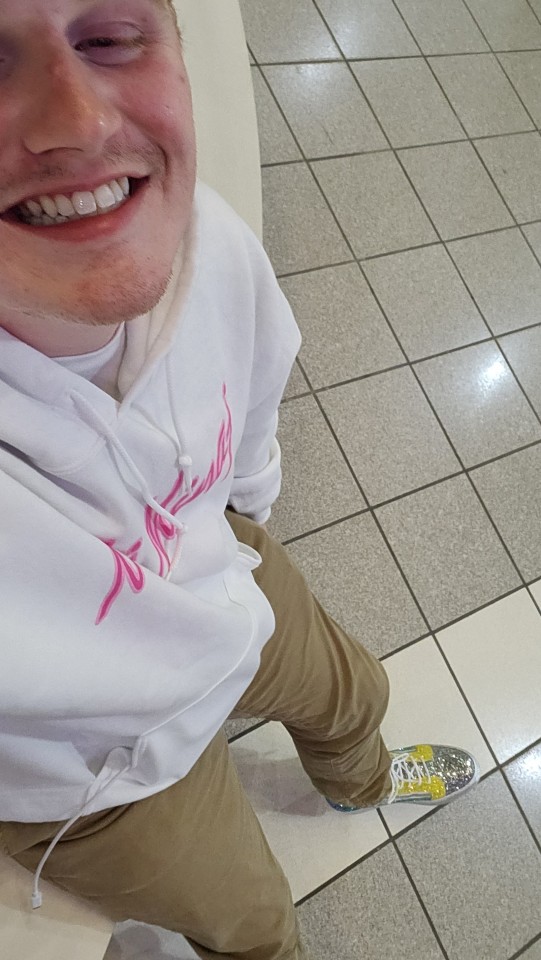
#ftcu#nicki#jingle ball#pink friday 2#roman in gag city#roman in malibu#nicki minaj#minaj#cnn center#state farm#state farm arena#atl#atlanta#georgia#barbie dangerous#are you gone already#beep beep#50 cent#fallin 4 u#fallin4u#let me calm down#Pink Birthday#needle#drake#cow girl#cowgirl#lourdiz#big difference#red ruby da sleeze#forward from trini
0 notes
Text
The rates of mothers and newborn babies dying during pregnancy, at birth or postpartum are much higher in states that currently ban or restrict abortions than in states preserving access, according to a new report.
The researchers analyzed data on deaths and other health outcomes using the most recent data available – from 2020 and earlier – and compared rates based on states’ current abortion access policies, as of November, after the Supreme Court decision this summer that overturned Roe v. Wade.
States that have restricted access to abortion services had maternal death rates in 2020 that were 62% higher than in states preserving access to abortion services. Between 2018 and 2020, the maternal death rate increased twice as fast in states that now have abortion restrictions, according to the report released Wednesday by the research foundation Commonwealth Fund.
Overall, death rates from any cause among women of reproductive age – 15 to 44 – were 34% higher in abortion-restriction states than in abortion-access states, according to the report.
The report also says that in 2019, fetal or infant death rates in the first week of life occurred at a 15% higher rate, on average, in states with abortion restrictions than in states with wider abortion access.
“Making reproductive services inaccessible to women and families can have dire consequences, and particularly, it varies by state,” said obstetrician/gynecologist Dr. Laurie Zephyrin, a co-author of the report and senior vice president for advancing health equity at the Commonwealth Fund.
In June the Supreme Court ruled on Dobbs v. Jackson Women’s Health Organization, which overturned Roe v. Wade, holding that there is no longer a federal constitutional right to an abortion and paving the way for states to ban abortions.
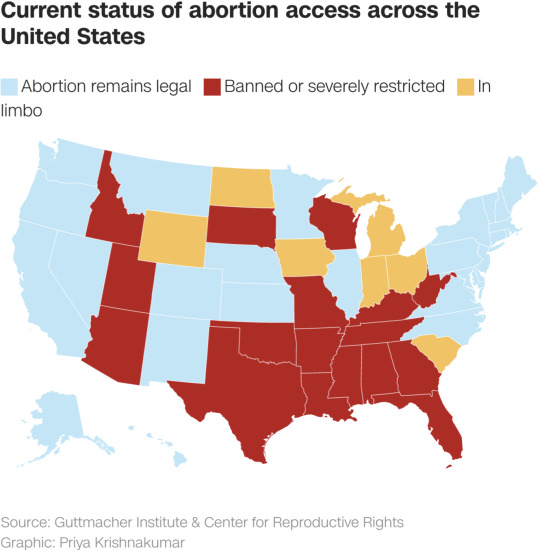
Based on the findings in the report, Zephyrin thinks maternal death rates in the US could worsen after the Dobbs decision.
“More people in the US die from complications of pregnancy and childbirth than any other developed nation, and most are preventable – and our rates are on the rise,” she said. “So I think that’s just very important as we think of this maternal health crisis and this collision of crises with this impact and this Dobbs decision.”
MATERNAL DEATH RATES 62% HIGHER IN ABORTION-RESTRICTION STATES
The new report – by researchers at Boston University and the Commonwealth Fund – includes data on state-by-state abortion policies and health outcomes among mothers and babies from sources including the US Centers for Disease Control and Prevention, the Health Resources and Services Administration and the nonprofit March of Dimes.
The researchers compared the health outcomes in 26 abortion-restricting states with those in the remaining 24 states and the District of Columbia, which appear to be unlikely to pass such restrictions.
The researchers found that slightly more than half – 55% – of US births in 2020 were in the 26 states currently with abortion bans or restrictions. In those states, births tended to be concentrated among women younger than 30, with 57% in women in that age group. In comparison, in abortion-access states, 45% of births were to women under 30.

The analysis also revealed that 39% of counties in states restricting abortion access fit the criteria to be considered “maternity care deserts,” meaning there is limited or no access to maternity health care services, such as an ob/gyn, hospital or birth center with obstetric care or certified midwives. In comparison, 25% of counties in abortion-access states can be considered maternity care deserts.
The researchers noted that a higher number of births in abortion-restriction states are in rural areas, where access to maternity care can be more limited and maternity care deserts more common. Rural areas had 17% of births in abortion-restriction states but 8% in abortion-access states.
The report also says that, between 2018 and 2020, the infant and perinatal mortality rates were 6.2 deaths per 1,000 births in abortion-restriction states, compared with 4.8 per 1,000 in abortion-access states. Across all racial and ethnic groups, infant mortality in the first year of life was higher in abortion-restriction states than in abortion-access states.
“What’s most surprising is, states have within their power to be able to avoid these outcomes,” Zephyrin said. “States really have it in their power to enhance maternal health capacity, really create the systems that are necessary to ensure that every person has an opportunity for a safe and healthy birth and life, whether we’re talking about recruiting maternity providers, providing more birthing centers, supporting the range of reproductive health services, expanding Medicaid, investing in postpartum Medicaid extension.”
Separate research published in 2020 in the journal Women’s Health Issues found that although maternal mortality overall continues to increase in the United States, the maternal death rate in states that have expanded Medicaid has had less of an increase than in non-expansion states.
“Compared with their counterparts in other states, women of reproductive age and birthing people in states with current or proposed abortion bans have more limited access to affordable health insurance coverage, worse health outcomes, and lower access to maternity care providers,” Zephyrin and her colleagues wrote in the new Commonwealth Fund report.
“Making abortion illegal risks widening these disparities, as states with already limited Medicaid maternity coverage and fewer maternity care resources lose providers who are reluctant to practice in states that they perceive as restricting their practice,” the researchers wrote. “The result is a deepening of fractures in the maternal health system and a compounding of inequities by race, ethnicity, and geography.”
‘THIS IS NOT HOW HEALTHCARE SHOULD BE’
Dr. Kristyn Brandi, the American College of Obstetricians and Gynecologists’ Darney-Landy Fellow, said she is not surprised by the findings in the new report because the “issues around reproductive health care are intricately linked.”
“My patients that seek abortion care are the same patients that need prenatal care in other pregnancies. Similarly, there is great data that suggests that the places that limit abortion also have higher maternal morbidity rates, less access to insurance, higher teen pregnancy rates, less access to sex education – the maps are overlapping,” Brandi, a practicing ob/gyn who was not involved in the research, wrote in an email to CNN.
She adds that restricting abortion care disproportionately affects marginalized communities, such as people with disabilities or travel limitations.
“It also means, similar to states that have only one abortion clinic, that the places where there are only one or a few labor and delivery units or prenatal care centers, those facilities will become overwhelmed with patients and that may create delays in care,” Brandi said. “This is not how healthcare should be. People should be able to access all reproductive health care services, regardless of their zip code.”
#us politics#news#cnn#abortions#abortion bans#reproductive health#reproductive rights#abortion is healthcare#2022#statistics#graphs#codify roe#roe v. wade#dobbs v. jackson women’s health organization#maternal death rate#Commonwealth Fund#infant death rates#fetal death rates#Dr. Laurie Zephyrin#Center for Disease Control and Prevention#Health Resources and Services Administration#March of Dimes#maternity care#perinatal mortality rates#infant mortality#expand Medicaid#expand medicare#Women’s Health Issues#Dr. Kristyn Brandi#American College of Obstetricians and Gynecologists
34 notes
·
View notes
Text
Man Pinned To Floor And Smothered To Death, Authorities Say
“You can see that they’re putting their back into it. Every part of his body is being pushed down with absolute brutality. You cannot even see his image many times,”
#black lives matter#lgbt#aclu#black lgbt#black stories#cnn#lgbtqi#news#southern poverty law center#naacp#black history#liberal#democratic party#blacklivesmatter#police brutality#police crime#police attack#police assault#police violence#law enforcement#kkk#kkkops#white supremecy#white supremist#prisons and jails#black history month#black pride#american civil liberties union#civil rights movement#civil rights
2 notes
·
View notes
Text
"One of the most exciting instances of fighting bans I’ve read about recently was in a CNN feature on The Queer Liberation Library, an entirely online nonprofit collection of hundreds of ebooks and audiobooks centering LGBTQ narratives that’s free to access. It launched in October and represents a creative way of circumventing book bans given social, political, and financial barriers to accessing queer literature. Existing entirely online, it welcomes people who might not be able to physically access spaces selling or lending queer books."
-Kayla Kumari Upadhyaya, LGBTQ Fiction Sales Are Up, but We Still Urgently Need Creative Ways To Fight Book Bans, @autostraddle, December, 27th, 2023.
740 notes
·
View notes
Text
I am looking back on older news articles and accounts of the Israeli military targeting medical personnel. I am using mainstream USAmerican news articles because I feel that in convincing other Americans in real life situations, it greatly strengthens the case that even sources ranging from disinterested to propagandistic in favor of Israel show the evidence of war crimes and, indeed, genocide.
The defense that everyone says is "Hamas uses medical infrastructure for military purposes." But it looks like in many cases, no real evidence ever emerged for the government's claims of hospitals and ambulances being used for Hamas military operations. This article is an example
The simple fact of a government saying something is not evidence that something is true. The only way it could be evidence, is if we think governments never lie and always tell the truth. That is, of course, silly.
This is important because: under the rules of war, medical personnel are to be protected. If an ambulance is being used for military purposes and is thus considered a military target, it is not so simple as just saying with no evidence "They were using the ambulance for military reasons," There has to be proof. There is no proof at all for most of the cases.
Similarly with the bombing of al-Shifa hospital, supposedly there was going to be proof released that there was a Hamas command center, but there was never any proof, and CNN investigated the footage they released of supposedly weapons found inside and found discrepancies.
The American media is normally really biased towards the Israeli government so it's a pretty big deal that CNN was like "Hey...somethings up with this video."
Folks keep saying "Well Hamas used hospitals as bases/command centers!" My friends, just saying this is not a blank check to do whatever you want. There needs to be solid proof. And there hasn't been solid proof, just unverifiable claims. Even CNN (again, a very mainstream USAmerican news network) says the claims cannot be verified.

The Israeli military took reporters to the hospital and showed them...the entrance to an underground shaft of some sort. That is very different from a "command and control center," and doesn't indicate the hospital was being used for military purposes.
USAmericans, listen to my words. All the arguments on the side of the Israeli government, require that the Israeli government is operating 100% in good faith and with good intentions.
I don't think that governments do that. I think that governments operate to protect their own interests. And consider this: If the USA government is going to defend the Israeli government no matter what—which is our policy—what would motivate the Israeli government to operate in good faith?
Biden says he is encouraging the military to minimize civilian deaths. Why would they try to do this, though, if USA will continue supporting them the exact same way with no consequences no matter what? (And does it look like they are trying?)
The truth cannot be denied no matter what skepticism or attitudes you have.
741 notes
·
View notes